Detroit’s Community Benefits Ordinance Yields Hours of Dialogue and Almost No Community Benefits
Detroiters voted to put a Community Benefits Ordinance on the books. One year later, what happened and has it worked?

In 2016, Detroit voters approved one of the nation’s first community benefits ordinances. The new law requires developers — who are going to get tax breaks or other economic incentives for large projects in the city — to sit down with residents and listen to their concerns about how the project will impact communities.
The measure made it on to the ballot, in part, because of concerns about ample tax abatements given to developers. Some thought the city was handing these out without enough consideration for the community that would be missing out on that revenue.
In its first year, the new ordinance required six large development projects to follow the new process.
Of the six projects:
- One is still in negotiations with the city
- One is the posterchild for this new law – a $100 million renovation of the abandoned Herman Kiefer Hospital campus north of downtown. The developer has agreed to contract with local residents for some of the rehabilitation work and says it will first offer new rentals to existing members of the community.
- Four belong to Dan Gilbert’s real estate company, Bedrock. The projects are a combination of new construction and rehabilitation projects, totaling $2.2 billion.
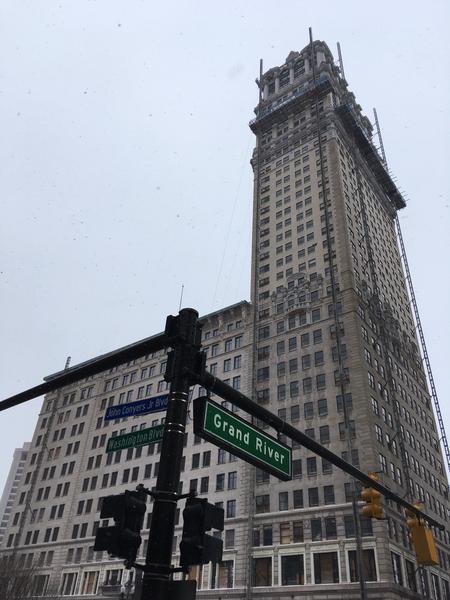
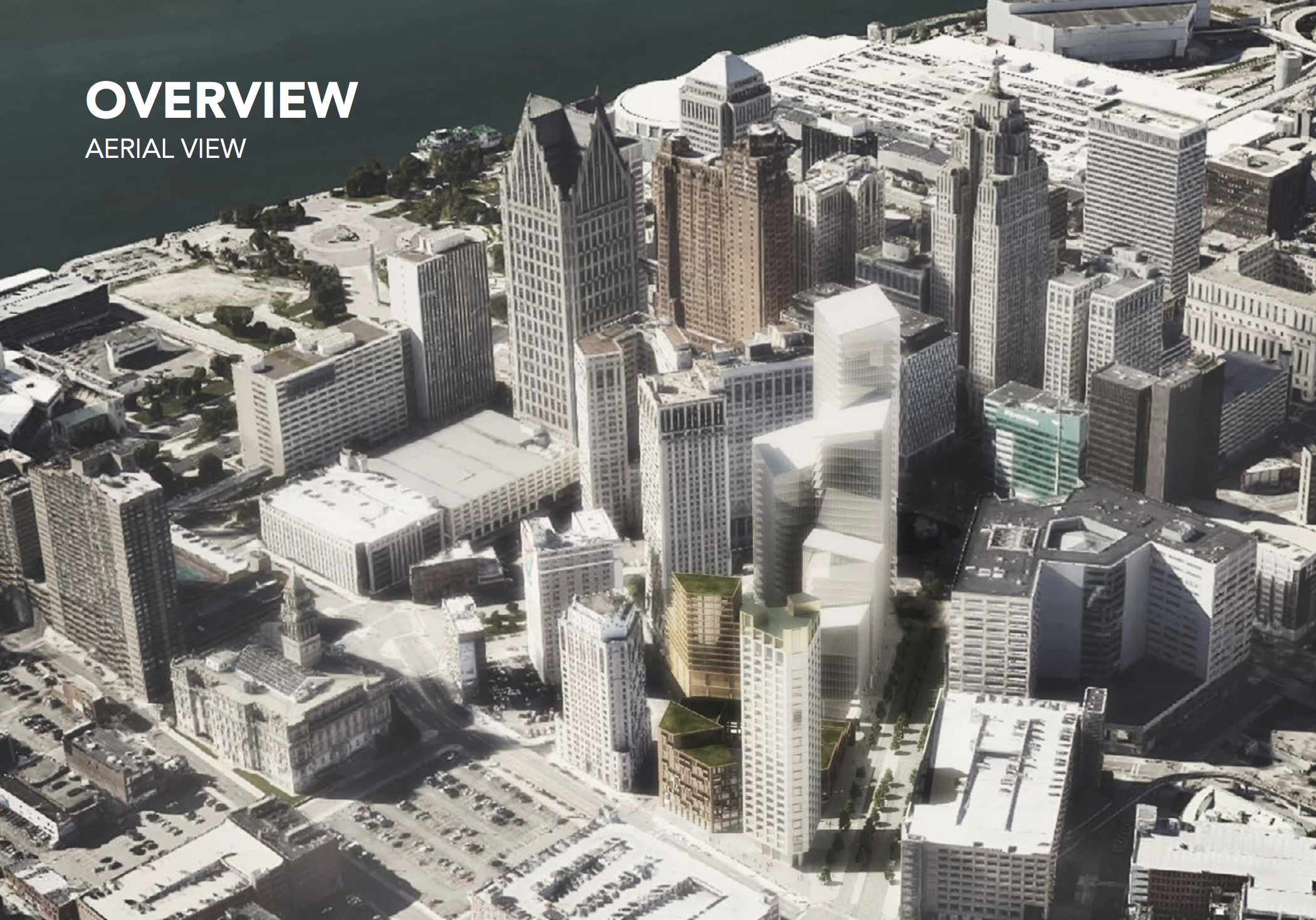
WDET found that after 12 weeks of community benefits talks with residents across the four projects, Bedrock committed to two community benefits in its agreements with the city.
The first: Bedrock would communicate with residents about construction-related activity. And the second: Bedrock would support job training initiatives, something the company has been doing for years. Bedrock officials say while they didn’t make major changes to the agreement, the company did do other things, like add greenspace to its plans.
In addition to the six projects, developers twice volunteered to go through the meeting process — Palace Sports and Entertainment did this with the Detroit Pistons’ practice facility and Bedrock LLC with the former Detroit Free Press building rehab.
WDET found the city last year conducted over 28 meetings for the community benefits ordinance process. The conversations between community members and developers resulted in mitigating the negative impacts of the new construction and in some cases developers making tweaks to their plans.
But, after all was said and done, the first year of Detroit’s Community Benefits ordinance yielded almost no community benefits that the city can enforce. And there’s debate about whether the law is effectively giving voice to community concerns or resulting in tangible neighborhood amenities.
Working with the Biggest Player in the Game
Dan Gilbert is one of the biggest private property owners in downtown Detroit. His real estate development company, Bedrock, has five major projects projects — totaling about $2.2 billion in construction costs and $250 million in tax incentives — that participated in the community benefits process last year.
So what was it like for residents to work with the biggest player in the game?
To answer this, let’s look at one of Bedrock’s three community benefits processes – the Book Tower rehabilitation and Monroe Block development, two different projects that the city grouped into one process.
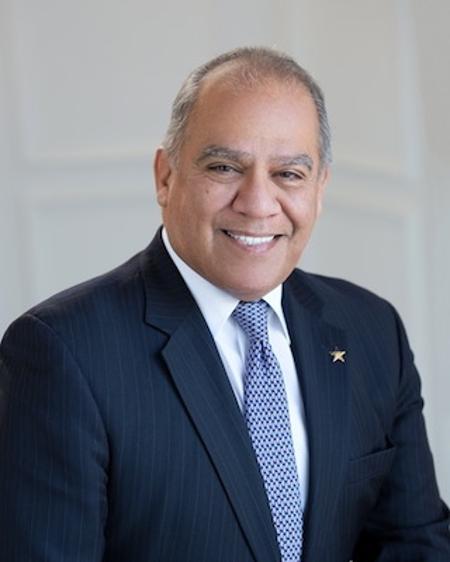
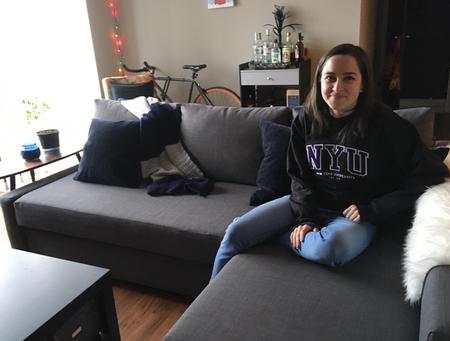
Rogelio Landin lives across the street from the iconic, but abandoned, Book Tower. He remembers seeing activity around the tower. Last year crews power-washed the facade and have been gutting the building in preparation for a hotel, office space and residences.
“When I first saw what was happening, I thought it was just fantastic,” says Landin.
Landin, a 64-year-old lifelong Detroiter volunteered to serve on the Neighborhood Advisory Council (NAC) to the Book Tower and Monroe Block projects. He and eight others were selected by fellow residents and city officials to make up the nine-person panel that would spend the next several weeks learning about the projects and making recommendations to Bedrock.
Alexandra Novak, a 24-year-old urban planner, served on the NAC alongside Landin. She says combining these two very large, very different projects into one community benefits projects overwhelmed the NAC.
Despite reading the ordinance and city officials explaining how everything would work, Novak says she was still confused about what exactly she could ask from the developer.
“What was I supposed to be asking about? … That was still really unclear to a lot of us throughout the whole process,” says Novak.
The NAC brought up concerns about issues related to the construction itself: parking, traffic, pedestrian walkways and noise. Bedrock representatives explained their existing plans, saying the company was working on a traffic logistics plan and would comply with other city ordinances. Company representatives also agreed to set up a direct line of communication for submitting complaints about any problems that would arise.
THE NATIONAL THEATRE CONTENTION
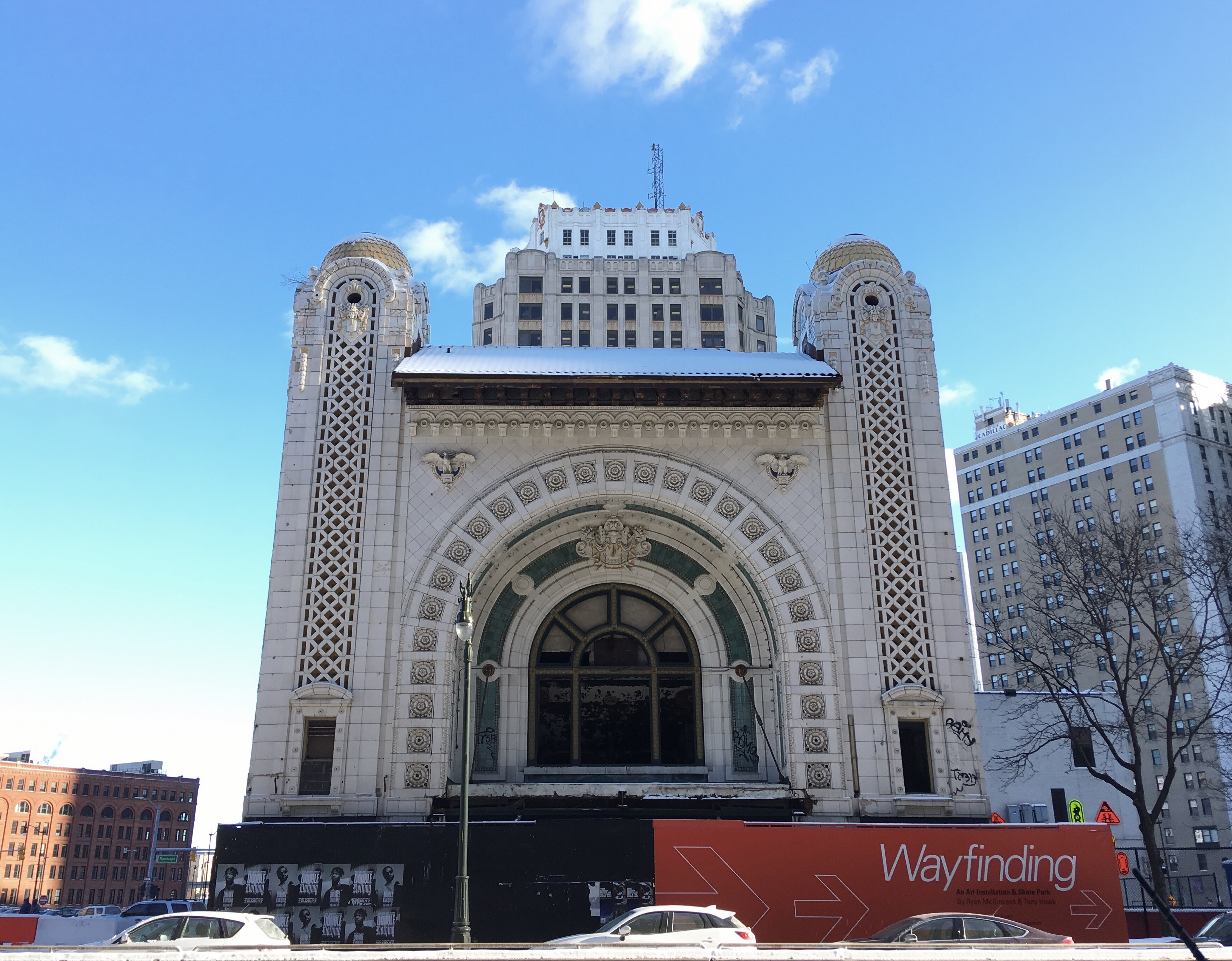
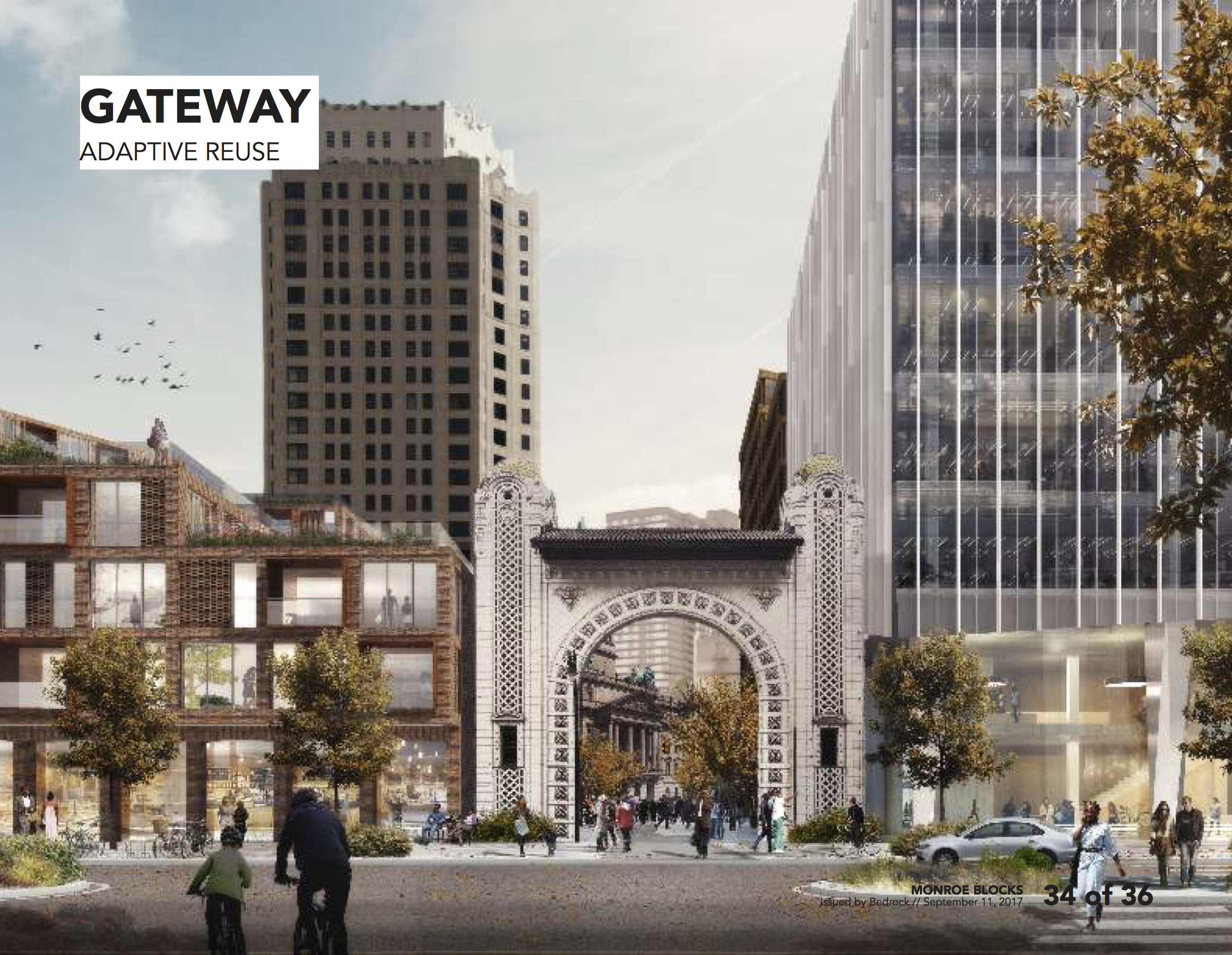
A significant portion of the conversations in the meetings dealt with an historically designated structure left standing on those mostly vacant lots off Monroe Street – the National Theatre. It was designed by architect Albert Kahn and is the oldest surviving theatre from Detroit’s first theatre district.
Steve Ogden, vice president of government affairs for Quicken Loans, represented Bedrock and its projects at these community meetings. He said the company could not leave the theater in place.
“It would have been on a structural wall that would not lend to the success of the development,” he says. “We were going to move it, it was just how it was going to get done.”
Several NAC members thought the structure should be salvaged and restored to some kind of working venue.
Ogden says when all was said and done with the community benefits meetings, Bedrock settled on using the facade as part of the entryway to the development.
“What we were proposing came together after several conversations with a lot of stakeholders in that space,” says Ogden. “We met with the National Historic Preservation Network, we met with the city’s historic advisory committee, we met with various historians and then our development community. We all came together, and guess what, we had three or four different perspectives. …There was no consensus.”
Five out of the nine NAC members submitted a letter to the Detroit City Council saying Bedrock’s response was unsatisfactory, and that they had asked for alternative design solutions that would better honor the historic site.
What Came Out of The Community Benefits Ordinance Meetings?
While Bedrock did not agree to save the theatre, Ogden says the company made other changes like incorporating more greenspace into their designs.
But, when all was said and done, the company and the city did not change their development agreement to include major community benefits. And according to the new law, developers do not have to agree to anything.
Overall, Ogden says the company was pleased with the experience of going through the community benefits process.
“This did not slow us down. What it helped us do is tell our own story,” says Steve Ogden, vice president of government relations for Quicken Loans.
“What we’re faced with in this organization is leaks to the media and people are running out trying to say what we’re up to, and so this really gave us a chance to tell our own story and share our vision,” he says.
Alexandra Novak says she enjoyed working with Bedrock representatives and is glad they will be doing the work in her neighborhood. But she was not completely satisfied with the outcome of the neighborhood council’s work.
“As far as responding to our concerns and things we feel are really important, [Bedrock] tends to dance around a direct answer,” Novak says. “[After the community benefits process finished] it was like, ‘I don’t know why we spent all our time and energy doing that if you weren’t going to really care or try hard to respond to our needs.’”
“I don’t know why we spent all our time and energy doing that if [Bedrock wasn’t] going to really care or try hard to respond to our needs,” says Neighborhood Advisory Council member Alexandra Novak.
Rogelio Landin, Novak’s fellow NAC member, saw it differently.
“I think Bedrock has extended themselves, to the extent that anyone can, above and beyond to meet, wherein possible, the expectation of the NACs,” he says.
Room for Improvement
Because the new ordinance has passed the one-year mark, City Council can amend it. And there are a couple of changes that council members say they support.
First, some city administrators and residents who have participated in the community benefits process have expressed an overarching concern: time.
Rogelio Landin, the downtown Detroit resident who served on two of the NACs for Bedrock projects, including the Hudson’s skyscraper which broke ground in December, says they were meeting almost weekly to put shovels in the ground before the end of the year.
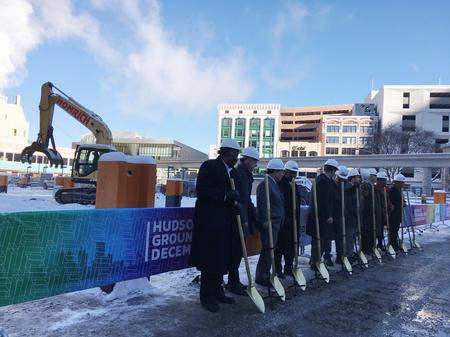
“It was fast tracked. It was fast paced,” says Landin. “People would have liked to have had more time to really go out and do more community engagement to get more input and more ideas.”
Reports from City Council’s Legislative Policy Division over the past year repeatedly recommended that council extend the amount of time alloted for these meetings, stating,
“The timeline, as it stands, does not have the necessary amount of time built in for thoughtful requests or responses from either the NAC (Neighborhood Advisory Council) or developer.”
City Council Member Scott Benson says extending the timeline is on the top of the list for proposed changes.
In addition to the timeline adjustment, City Council Member Raquel Castaneda-Lopez says she’d like to see city officials do more detailed civic engagement work, such as educating and preparing communities before a development comes to the neighborhood.
“Four to six weeks to run through a community benefits process is a little disingenuous to have true community engagement in development,” she says.
As it stands, that education comes during the process, which takes away from time that could be spent consulting neighbors or talking with the developer.
The second on the list of changes has to deal with transparency. Benson and Castaneda-Lopez say they will support changes to the law that make provisions for getting NAC members the documents they request in a timely manner.
Benson says several projects are already expected to trigger the Community Benefits Ordinance this year, so the city will have more opportunity to implement these changes.
HOW DO I PARTICIPATE IN A NEIGHBORHOOD ADVISORY COUNCIL?
To serve on a Neighborhood Advisory Council (NAC), you must live in the impact area of the new development. This is determined by census tract.
If a new large development is slated for your neighborhood, the city will mail you a flyer informing you of the first community meeting. At that meeting you can nominate yourself for the council and your fellow neighbors and city officials will choose 9 people from that pool of nominations.
*ALL of the meetings related to the Community Benefits Ordinance are public. You can visit this website to check on any upcoming meetings or call the city’s Planning and Development Department at (313) 224-1339.
